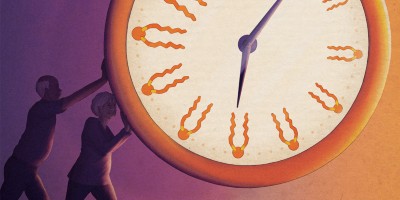Microglia exhibit unexpected sex differences in gene expression and accessibility and compromised inflammatory responses during the aging process in mice. We established a mouse model with accelerated microglial turnover (3xDR), which results in aged microglia in non-aged brains. Analysis of this model revealed that aged microglia themselves contribute to cognitive decline.

References
Perry, V. H. & Holmes, C. Microglial priming in neurodegenerative disease. Nat. Rev. Neurol. 10, 217–224 (2014). A review that summarizes the role of microglial priming in neuronal dysfunction and neurodegeneration.
Erblich, B., Zhu, L., Elgen, A. M., Dobrenis, K. & Pollard, J. W. Absence of colony stimulation factor-1 receptor results in loss of microglia, disrupted brain development and olfactory deficits. PLoS ONE 6, e26317 (2011). This paper reports that microglial survival is dependent on CSF1R signaling.
Huang, Y. et al. Repopulated microglia are solely derived from the proliferation of residual microglia after acute depletion. Nat. Neurosci. 21, 530–540 (2018). This paper reports that microglia can rapidly proliferate and repopulate the whole brain through self-renewal.
Reu, P. et al. The lifespan and turnover of microglia in the human brain. Cell Rep. 20, 779–784 (2017). This paper reports that 28% of microglia turn over per year in the human brain.
Xu, Z. et al. Efficient strategies for microglia replacement in the central nervous system. Cell Rep. 32, 108041 (2020). This paper achieved efficient microglia replacement and proposed an idea for therapeutic interventions.
Additional information
Publisher’s note Springer Nature remains neutral with regard to jurisdictional claims in published maps and institutional affiliations.
This is a summary of: Li, X. et al. Transcriptional and epigenetic decoding of the microglial aging process. Nat. Aging https://doi.org/10.1038/s43587-023-00479-x (2023).
Rights and permissions
About this article
Cite this article
Dissecting microglial aging and creating a model of aged microglia in a non-aged brain. Nat Aging 3, 1185–1186 (2023). https://doi.org/10.1038/s43587-023-00487-x
Published:
Issue Date:
DOI: https://doi.org/10.1038/s43587-023-00487-x
- Springer Nature America, Inc.


